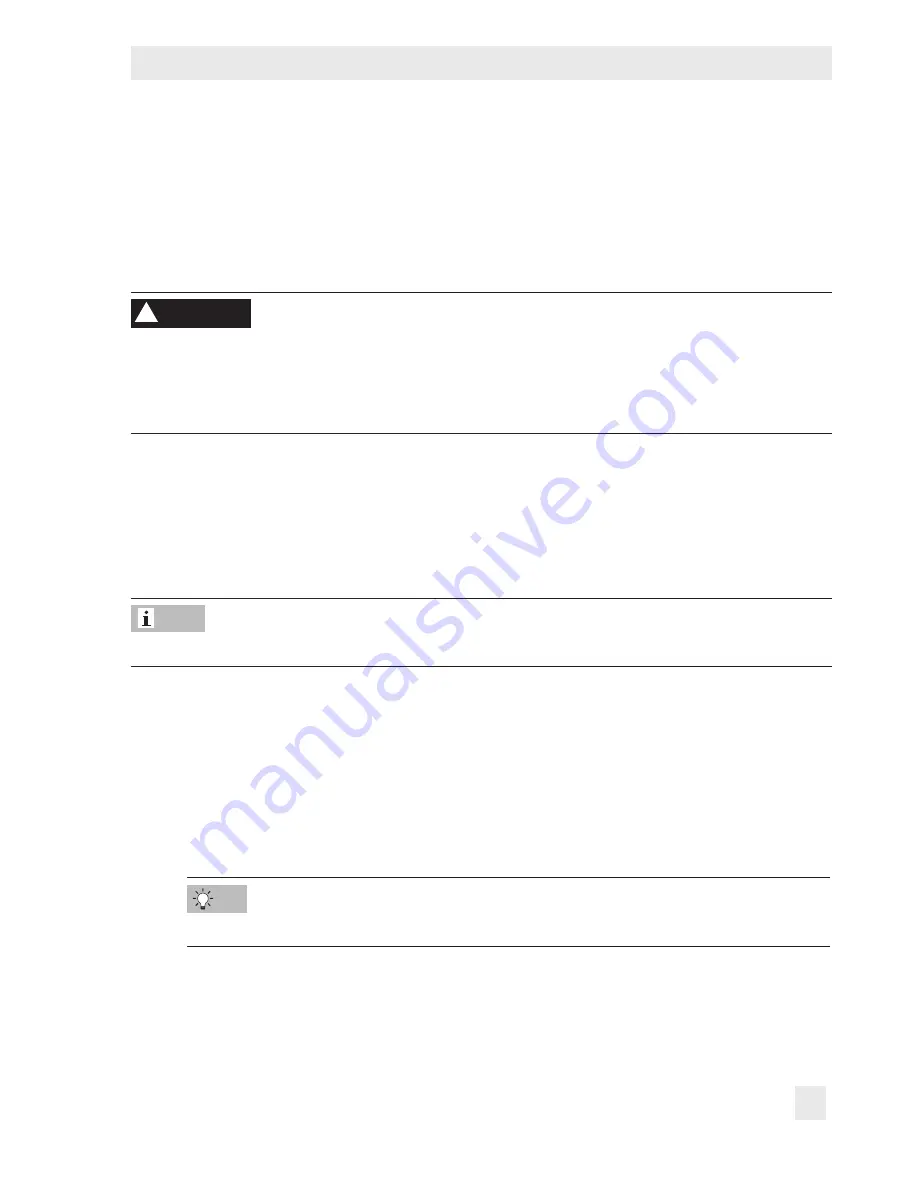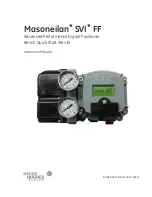
SH 8384-3 EN
13
Proof testing
6
Proof testing
The proof test interval and the extent of testing lie within the operator's responsibility. The
operator must draw up a test plan, in which the proof tests and the interval between them
are specified. We recommend summarizing the requirements of the proof test in a check
-
list.
Risk of dangerous failure due to malfunction in the event of emergency (actuator is not vented
or the valve does not move to the fail-safe position).
Only use devices in safety-instrumented systems that have passed the proof test according to
the test plan drawn up by the operator.
Regularly check the safety-instrumented function of the entire SIS loop. The test intervals are
determined, for example on calculating each single SIS loop in a plant (PFD
avg
).
Function testing
Regularly check the safety function according to the test plan drawn up by the operator.
Record any faults in the positioner and inform SAMSON of them in writing.
−
Emergency venting by applying a 0 mA signal to terminals 11/12 (control signal):
1. Apply supply air within the permissible range (max. 7 bar) to the positioner which
allows the valve to move to the maximum travel/angle of rotation.
2. Apply an electric input signal ≥3.6 mA to the positioner (terminals 11/12).
3. Switch the positioner to automatic mode (if it has not already been done).
4. Apply the input signal (terminals 11/12) over a local current source or over the con-
trol system in such a way that the valve moves to 50 % of its travel/opening angle.
The travel in automatic mode can be read at the positioner in Code 0.
5. Set the electric input signal to 0 mA or disconnect it.
This must cause the valve to move to its fail-safe position (terminals 11/12).
WARNING
!
Note
Tip
Summary of Contents for TROVIS 3730-3
Page 16: ...16 SH 8384 3 EN...




























